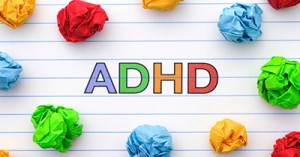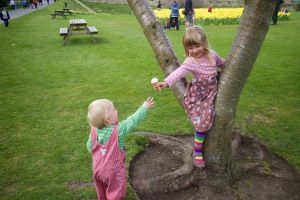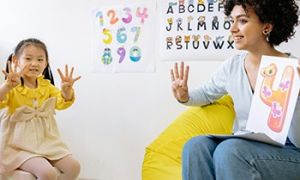Neurodivergence refers to natural variations in how brains process information, emotions, and social interactions. In early childhood, this may include children with autism, ADHD, dyslexia, dyspraxia, or other neurological differences.
These children may:
- Communicate in unique ways
- Experience sensory sensitivities
- Show intense focus on specific interests
- Struggle with transitions or traditional routines
Recognizing neurodivergence means shifting from a deficit model (“what’s wrong”) to a diversity model (“what’s different and valuable”).
Strategies for Educators
1. Create Predictable, Flexible Routines
- Why: Neurodivergent children often feel safer with structure.
- Practical Example: Use visual schedules with pictures to show daily activities. Allow flexibility if a child needs extra time to transition between tasks.
2. Design Sensory-Friendly Environments
- Why: Sensory overload can cause distress.
- Practical Example: Provide a quiet corner with soft lighting, noise-cancelling headphones, or tactile toys. Rotate sensory materials like sand, water, or textured fabrics.
3. Use Strength-Based Learning
- Why: Building on interests boosts confidence and engagement.
- Practical Example: If a child loves trains, integrate trains into counting activities, storytelling, or art projects.
4. Support Communication Differences
- Why: Not all children use verbal language consistently.
- Practical Example: Incorporate visual aids, sign language, or AAC devices. Celebrate gestures, drawings, or alternative forms of expression.
5. Foster Peer Inclusion
- Why: Social belonging is critical for well-being.
- Practical Example: Pair children in buddy systems for play. Model inclusive language and encourage peers to respect differences.
6. Collaborate with Families
- Why: Families know their child best.
- Practical Example: Hold regular check-ins, share observations, and co-design strategies. Ask families about sensory triggers or calming techniques that work at home.
Embedding Neurodiversity in Practice
- Professional reflection: Encourage staff to question biases and adapt teaching styles.
- Policy alignment: Link strategies to the EYLF outcomes (Belonging, Being, Becoming) and NQS Quality Areas (Relationships, Inclusion, and Educational Program).
- Continuous improvement: Document what works, share case studies, and refine approaches collaboratively.
Neurodivergent children bring creativity, unique perspectives, and resilience to early childhood settings. By implementing practical, inclusive strategies, educators can transform challenges into opportunities for growth. The goal is not to make children “fit” the system but to reshape environments so every child belongs, learns, and thrives.
Further Reading
Supporting Children With Autism In Early Childhood Settings
Autism In Children
Free Online Training Program - Navigating Autism: The Early Years
Autism Identified In Babies Reactions To Rhymes and Games
20 Autism Friendly Activities For Children
References:
Practical Strategies For Supporting Neurodivergent Children In Childcare
Teaching Neurodivergent Children in Early Childhood Education







 Working as a childcare professional can be a challenge especially when dealing with behavioural problems which may arise. The techniques we use when dealing with
Working as a childcare professional can be a challenge especially when dealing with behavioural problems which may arise. The techniques we use when dealing with There are different types of behaviour that children can display and sometimes it can be hard to manage, especially if a child is having behavioural
There are different types of behaviour that children can display and sometimes it can be hard to manage, especially if a child is having behavioural As a parent, your behavioural expectations of your child can be higher than what is actually developmentally appropriate for your child's age.
As a parent, your behavioural expectations of your child can be higher than what is actually developmentally appropriate for your child's age.
 As Educators, there will be many instances where you will need to write about a child's behaviour. For a behaviour management plan, assessments, half-yearly or
As Educators, there will be many instances where you will need to write about a child's behaviour. For a behaviour management plan, assessments, half-yearly or As Educators when communicating with Parents (through verbal or non-verbal communication), there will be times where we need to discuss issues or concerns that may
As Educators when communicating with Parents (through verbal or non-verbal communication), there will be times where we need to discuss issues or concerns that may Challenging Behaviour is when a child does something that hurts themselves and/or other people.
Challenging Behaviour is when a child does something that hurts themselves and/or other people.
 As part of your child's development it is normal for your child to have anxiety and fears. A baby commonly shows a fearful sign to
As part of your child's development it is normal for your child to have anxiety and fears. A baby commonly shows a fearful sign to It's always difficult to bring up behavioural issues with parents, it can be nerve wrecking to tell a parent that their child misbehaves but that
It's always difficult to bring up behavioural issues with parents, it can be nerve wrecking to tell a parent that their child misbehaves but that All children deal with anger on a daily basis. Thinking about it as a child, there is a lot to be angry about. Elder people
All children deal with anger on a daily basis. Thinking about it as a child, there is a lot to be angry about. Elder people It is important to understand that your child behaviour problems could not just be from attention seeking. There are many factors to take into consideration
It is important to understand that your child behaviour problems could not just be from attention seeking. There are many factors to take into consideration


